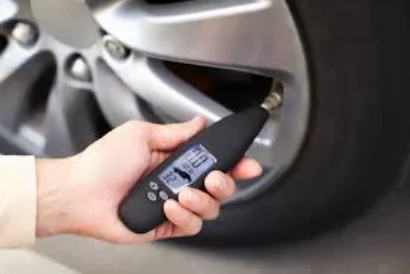Maintaining proper tyre pressure is a simple yet crucial aspect of Ford Kuga ownership. Inflating your tyres to the recommended levels unlocks a multitude of benefits:
- Enhanced Safety: Optimal pressure minimizes the risk of blowouts, improves handling, and shortens stopping distances.
- Boosted Fuel Efficiency: Properly inflated tyres reduce rolling resistance, translating to better fuel economy on every journey.
- Maximized Performance: Precise tyre pressure ensures optimal grip and responsiveness, leading to exhilarating handling and confident cornering.
- Extended Tyre Life: Correct pressure promotes even wear and tear, extending the lifespan of your valuable tyres.
Finding the Right Pressure for Your Ford Kuga
Unfortunately, there’s no one-size-fits-all answer. The recommended tyre pressure for your Ford Kuga depends on several factors:

- Model Year and Engine: Different Ford Kuga models and engines have specific pressure requirements.
- Tyre Size and Type: Summer, winter, and all-season tyres call for varying pressure levels.
- Load: Carrying additional passengers or cargo may necessitate slightly higher pressure.
Unveiling the Recommended Pressure
To find the precise pressure for your specific Ford Kuga, consult two trusted sources:
- Driver’s Door Placard: Inside the driver’s door jamb, a sticker details the recommended pressure for your Ford Kuga model and fitted tyre size.
- Owner’s Manual: Your Ford Kuga owner’s manual provides comprehensive information on recommended pressure under various conditions and load scenarios.
Checking and Adjusting Like a Pro
Maintaining the right pressure is a breeze:
- Invest in a reliable tyre pressure gauge: Accuracy is key!
- Check your pressure regularly: Monthly checks are ideal, especially before long trips.
- Always check cold tyres: Avoid measuring after driving, as warm tyres inflate and provide inaccurate readings.
- Adjust to the recommended level: Add or remove air as needed, remembering the spare tyre.
Bonus Tips for the Road
- Monitor your TPWS: If your Ford Kuga is equipped with a Tyre Pressure Warning System, heed its alerts and address any pressure imbalances promptly.
- Adjust for heavier loads: Consider slightly higher pressure when carrying a full car or towing.
- Stay climate-aware: Extreme temperature changes can affect tyre pressure, so keep an eye on your gauge during hot or cold spells.
By following these simple steps and maintaining the right tyre pressure, you’ll unlock a safer, more enjoyable, and economical driving experience in your Ford Kuga. Remember, your tires are your connection to the road; treat them right, and they’ll take you farther.
Let’s make things even clearer with some handy tables and FAQs
Table 1
| Model Year & Engine | Tyre Size | Front (bar) | Rear (bar) |
| 2023 1.5L EcoBoost | 235/50R18 | 2.3 | 2.3 |
| 2023 2.0L EcoBoost | 235/45R19 | 2.3 | 2.3 |
| 2022 1.5L EcoBoost | 235/55R17 | 2.4 | 2.8 |
| 2022 2.0L EcoBoost | 235/50R18 | 2.4 | 2.8 |
Table 2: Additional Pressure Adjustments for Specific Scenarios
| Scenario | Front Tyres (bar) | Rear Tyres (bar) |
| Heavy Load (+4 passengers or cargo) | 0.2 | 0.2 |
| Towing | 0.4 | 0.4 |
| Cold Weather (-10°C or below) | 0.2 | 0.2 |
FAQs
Q: What happens if I under-inflate my tires?
A: Under Inflated tyres increase the risk of blowouts, reduce fuel efficiency, and lead to uneven wear, shortening their lifespan.
Q: What happens if I over inflate my tires?
A: Overinflated tyres can compromise handling, reduce grip, and cause premature wear in the center of the tread.
Q: Can I use a tyre pressure gauge from a gas station?
A: Yes, most gas station gauges are reliable. However, investing in your own high-quality gauge ensures consistent accuracy.
Q: How often should I reset my TPWS?
A: You typically don’t need to reset your TPWS manually. It automatically calibrates


